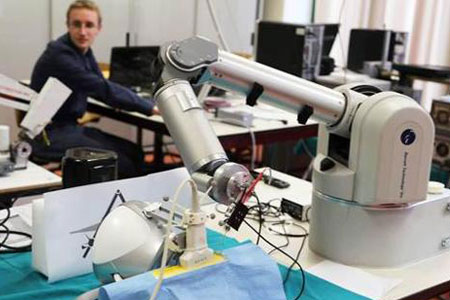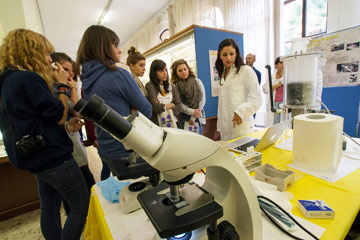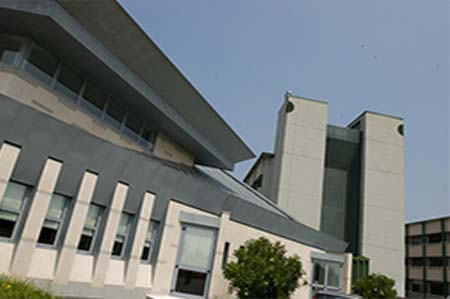Competenze
| Argomento |
Descrizione |
Area di ricerca |
|
Active learning
|
Nell'apprendimento attivo, il modello interroga iterativamente un oracolo (tipicamente un annotatore umano) per etichettare solo i punti dati più informativi che contribuiscono maggiormente a migliorare l'accuratezza del modello. In questo modo, l'apprendimento attivo riduce il costo dell'etichettatura e accelera il processo di apprendimento del modello. Questo approccio è particolarmente utile quando i dati etichettati sono scarsi o costosi da ottenere. La ricerca si concentra sullo sviluppo di criteri di selezione efficaci per identificare i punti dati più informativi da etichettare, migliorando così l'efficienza del processo di apprendimento attivo.
|
Intelligenza Artificiale
Machine learning
|
|
Apprendimento non supervisionato
|
È un approccio in cui i modelli vengono addestrati su dati non etichettati, con l'obiettivo di identificare schemi o strutture nascoste all'interno dei dati senza etichette predefinite. Viene comunemente utilizzato per compiti come il clustering, la riduzione della dimensionalità dei dati e il rilevamento delle anomalie. La ricerca aperta nell'apprendimento non supervisionato si concentra sul miglioramento della capacità di scoprire strutture significative in insiemi di dati complessi e ad alta dimensione, spesso con conoscenze preliminari limitate. Le sfide principali includono lo sviluppo di algoritmi di clustering più efficaci, il miglioramento dell'interpretabilità dei modelli che scoprono strutture latenti e la gestione di alti livelli di rumore o scarsità nei dati. Inoltre, sono in corso lavori per colmare il divario tra l'apprendimento non supervisionato e altri paradigmi, come l'apprendimento semi-supervisionato, auto-supervisionato e per contrasto, e per migliorare la robustezza dei modelli non supervisionati nelle applicazioni reali.
|
Intelligenza Artificiale
Machine learning
|
|
Apprendimento supervisionato
|
È un approccio in cui i modelli vengono addestrati su dati etichettati per apprendere una mappatura dagli input agli output, consentendo loro di prevedere etichette corrette per nuovi dati non visti. Sebbene sia ampiamente utilizzato per compiti come classificazione, regressione e predizione di serie temporali, la ricerca attuale in questo campo affronta diverse sfide. Tra le questioni principali, si annoverano come rendere i modelli più robusti al rumore e alle incongruenze delle etichette, migliorare l’efficienza dei campioni per ridurre la necessità di grandi set di dati etichettati e abilitare un "trasferimento" di conoscenza (transfer learning) efficace tra compiti e domini diversi con dati etichettati limitati. Inoltre, affrontare problematiche di equità e bias nei modelli supervisionati, così come migliorare la scalabilità per gestire grandi set di dati senza compromettere le prestazioni, oltre che approcci basati su attenzione/transformer restano aree di ricerca attive.
|
Intelligenza Artificiale
Machine learning
|
|
Bioinformatics and Natural Computing
|
La nostra ricerca è focalizzata sui punti seguenti: 1) Analisi discreta e algoritmica di dinamiche biologiche (metabolismo, replicazione e loro rapporti nei processi cellulari), 2) Analisi informazionale e computazionale di genomi (dizionari genomici, indici genomici, distribuzioni di parametri, rappresentazione di genomi, sintesi e ricostruzione di genomi). In queste aree di ricerca sono sviluppati, teorie, algoritmi e software per esperimenti e analisi computazionali.
|
Bioinformatica e informatica medica
Life and medical sciences
|
|
Biologia Computazionale
|
Analizzare efficacemente i dati biomedici sviluppando metodi innovativi per l'estrazione di reti biologiche, l'integrazione di dati eterogenei, l'analisi dei dati omici, la ricostruzione di pan-genomi, l'analisi dei genomi considerando gli aplogruppi, la previsione del riposizionamento dei farmaci e delle combinazioni terapeutiche, l'individuazione dei trattamenti ottimali e l'implementazione di strategie avanzate per la classificazione e la stratificazione dei pazienti.
|
Sistemi informativi ed analisi dei dati
Computational Biology
|
|
Deep learning
|
Si focalizza sull'addestramento di reti neurali profonde, ovvero con numerosi strati, per apprendere automaticamente pattern e rappresentazioni da grandi quantità di dati. Utilizzando architetture come le reti neurali convoluzionali (CNN) per le immagini, le reti neurali ricorrenti (RNN) per i dati sequenziali e i transformer per compiti diversi, l'apprendimento profondo eccelle in compiti complessi come il riconoscimento delle immagini, l'elaborazione del linguaggio naturale, il riconoscimento vocale, il reinforcement learning, la predizione di serie temporali e la guida autonoma.
|
Intelligenza Artificiale
Machine learning
|
|
Systems Biology, Computational Network Biology
|
Progettazione di algoritmi e metodi per lo studio di sistemi biologici utilizzando tecniche bioinformatiche e di data mining. L'attenzione è rivolta alla modellazione, alla perturbazione e all'analisi delle reti biologiche; classificazione dei fenotipi mediante profili di espressione codificanti e non; la sinergia dei farmaci e il meccanismo di azione di farmaci-target e off-target.
|
Bioinformatica e informatica medica
Life and medical sciences
|








 giugno
giugno univr
univr
